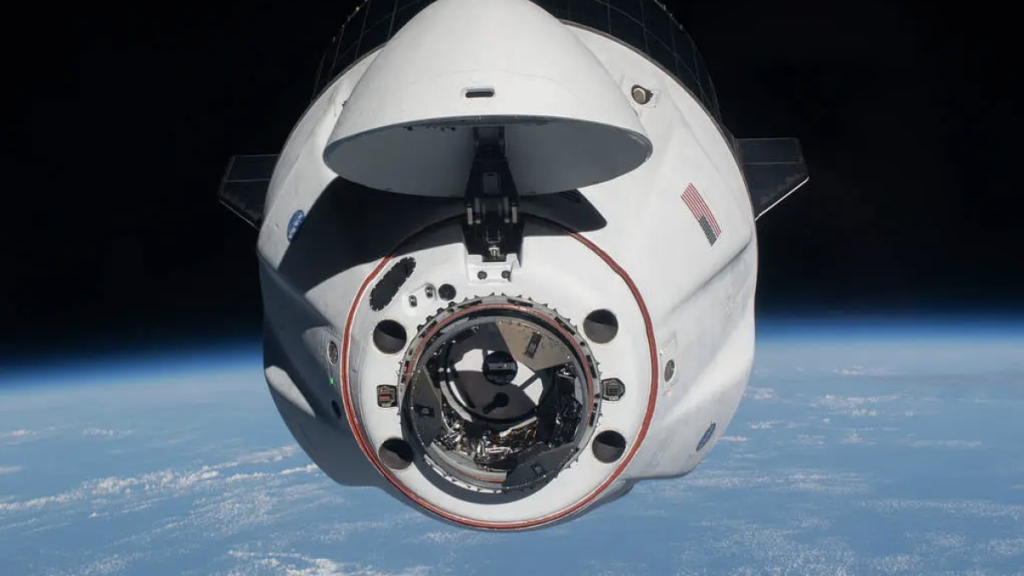
Scientists are collecting pee from SpaceX travelers. There’s a good reason. (Image Credit: Mashable)
The space company’s Polaris Dawn endeavor — a private venture funded by billionaire Jared Isaacman — is a five-day mission around Earth featuring an ambitious attempt at a spacewalk. The mission also carries dozens of science experiments, including one designed by Buckey, today a professor of medicine and director of Dartmouth College’s Space Medicine Innovations Lab, and Mimi Lan, a Dartmouth PhD candidate and engineer.
Specifically, it’s a device to collect the SpaceX travelers’ urine. It’s part of the scientists’ aim to track bone loss in astronauts — particularly in future deep space journeys — and to monitor whether a space traveler is at risk for developing kidney stones. That’s because, in space, calcium leaves our bones, enters the bloodstream, and exits in the urine.
“If you remove gravity, the bone starts to break down,” Buckey told Mashable after the mission successfully launched on Sept. 10.
Buckey and Lan want to prove that the “first morning void” — the first pee in the morning and usually the most concentrated one of the day — can reliably track bone loss and show if astronauts are at a higher risk for developing kidney stones. (Kidney stones are created when substances like calcium become too concentrated in urine.) If this were to happen in en route to, say Mars, an alerted astronaut could start drinking plenty more water, or if needed, take medication. No one wants to pass a kidney stone ever; particularly in a tiny space capsule.
“If you remove gravity, the bone starts to break down.”
The SpaceX passengers will use the device similar to the one shown below, held by Lan, to collect their concentrated first morning urine. In outer space, urinary calcium goes up briskly, so the researchers suspect that just one a.m. void on this condensed mission will be enough to show they can reliably capture a usable sample. For this experiment, the samples won’t be analyzed in space, but will be taken to a lab on Earth. (For comparison, the SpaceX passengers provided urine samples before launch.)

Credit: David Haley / Dartmouth College
NASA is intensively investigating bone loss in astronauts, and how to prevent it — so such a tracking device could be hugely relevant as the agency endeavors to build a lunar-orbiting space station and send people to deeper space.
“For every month in space, astronauts’ weight-bearing bones become roughly 1 percent less dense if they don’t take precautions to counter this loss,” the agency explains. “Much research focuses on determining the right combination of diet, exercise, and medication to keep astronauts healthy during missions and when they return to Earth or set foot on the Moon or Mars.”

Credit: NASA
While orbiting the moon, or on a long voyage to Mars or an asteroid, Buckey envisions an astronaut collecting their first morning void for three days in a row every couple weeks or so. That seems like an achievable option in cramped quarters, amid days filled with spacecraft operations, attempting to exercise, run experiments, and survive. Many of the next expeditions to the moon and Mars won’t be aboard a spacious space shuttle (which was large enough to carry eight astronauts).
“The future is smaller flights in small capsules,” Buckey said.
Topics
SpaceX





